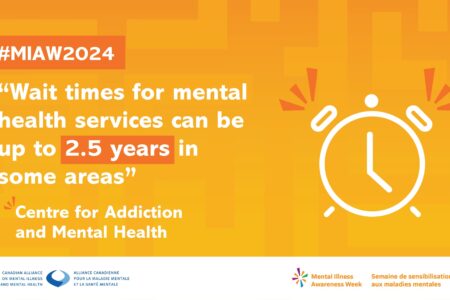Mentally Interesting, Part 1: The access to services edition
After a lot of thought and weighing of pros and cons, I decided to write this article – hopefully one in a series – about an issue very close to my heart. Living in a small town such as this one means there is a certain amount of risk in revealing a personal issue to the public, but at the same time, I don’t feel I have a lot to lose. After all, Clara Hughes “came out”, so why shouldn’t I?
I have a mood disorder. I have written about SAD before, but in actuality SAD is merely one component of a more complicated illness called Major Depressive Disorder (MDD). This is a chronic condition that affects most aspects of my life on a daily basis. Living with this condition has shaped the trajectory of my life for three decades, and at times I’ve spent years completely debilitated by it.
Consequently, I have spent a considerable amount of time navigating the rough and choppy waters of a health care system in Canada, that, while universal, has offered me the opportunity to experience mental health services in three different regions with varying success. While access is there, it’s not consistent across the board. In fact, as I will discuss in this article, it can at times be very demoralizing and frustrating, and it creates huge problems for a vulnerable part of our population. In the March 28th issue of Maclean’s, there was an article entitled “Mental Health for the Few”. It outlined the sad state of mental health policy in Canada and the lack of access many Canadians experience with the current way of doing things here. There was a lot of alarming information in it: seven million Canadians experience mental illness every year; Canada is the only country in the G7 that does not have a mental health strategy; the annual cost of lost productivity is reported at $51 billion, according to the Centre for Addiction and Mental Health; and in Ontario, according to the executive director of the Canadian Mental Health Association, only one in three adults gets access to mental health care, and in the case of children, it’s one in six.
I have a personal connection to what passes for mental health services in Ontario. I resided in Ottawa for 7 years between 1998 and 2005. After a series of visits to the ER for severe depression, was eventually admitted to the psychiatric unit at the Ottawa General Hospital. I spent 13 weeks on this ward, which was fairly large and treated anything from eating disorders to schizophrenics and everything in between.
It was a busy place and had a staff shortage, but, in general, I have few complaints about my time there, except for the food, which was brutal.
It was after discharge that the real challenge began. After my long sojourn on that ward, I was discharged into a three week day program run out of that hospital. Upon discharge from that, however, I was pretty much left to my own devices to find follow-up care.
There is no mental health system in Ontario. This meant that after leaving the day program, I was responsible for finding my own psychiatrist, my own employment assistance services, and any other support services I needed access to. No psychiatrists in the area were taking new patients and everywhere I tried there was at least a six month wait list. I was still acute enough to need regular visits with a specialist. My GP exhausted all the contacts she had, and in the end, what we wound up doing was putting my name in at the hospital to see someone at the outpatient clinic.
I was assigned a psychiatrist who had room in her patient load, and this wound up being a disaster. Long story short: she was horrible. Attempts to find someone to replace her were futile. I was told by shrink after shrink that since I had a psychiatrist already, they wouldn’t take me on because they already had enormous patient loads and waiting lists. I was told that if I wanted to wait six months, perhaps I could have a consult or medication review, but again, that was too long for me to wait. One doctor even told me that I needed to stay with this terrible shrink I was assigned because often patients dislike their shrinks when they’re close to a breakthrough – and since I disliked her that much I must be really close to a breakthrough. I endured this situation for five years.
The big problem in Ottawa was not only lack of psychiatrists, but lack of a central place to find other support services one needs when recovering from an illness like MDD. Any services I did find were through word-of-mouth via a friend I made in the hospital who had been navigating the mental health waters there for years. Ottawa – and presumably Ontario – has a lot of individual service providers for people with mental illness, however, there is no central referring place to find these services. I picked my way through this non-system for that same five years.
Fast forward a few years to Victoria where, once again, I needed treatment for MDD. Having just relocated from Ottawa, I wasn’t aware that BC had a mental health system, so when I went to a walk-in clinic in a bit of a crisis seeking help, I was relieved to find that all my doctor had to do was write a referral to the local mental health office and I would be assessed within days and from there referred on to an appropriate service.
I thought I had died and gone to heaven! After the referral was sent in, I indeed received a call within a few business days, I was assessed over the phone by a very nice psychiatric nurse, and I was then referred on to a mental health clinic and given a case manager, whose role it was to not only provide counselling, but to find me the resources I needed to get well. This meant access to different therapy groups and all kinds of programs run out of the Eric Martin Pavilion at the Royal Jubilee Hospital. Also, she could get me in to see a psychiatrist for a medication review and/or a case review relatively quickly, and this is exactly what she did. After my Ottawa experience, this seemed nothing short of miraculous.
Fast forward again, slightly, to the Kootenays in the summer of 2006. After spending five weeks in the Eric Martin Pavilion, I needed to access mental health services here because I’d had to move back home after being discharged. Once again, despite being in a different health authority, I was given quick access to a case manager at Trail Mental Health (TMH) and was able to get excellent follow-up care with a psychiatrist. I didn’t need any kind of referral, even though the social worker on the ward in Victoria had set up an appointment for me at TMH before I was discharged. I found out that TMH has a self-referring system. Anyone needing mental health or addictions services can just walk into the office at TMH and get an appointment. However, this is not the case all through the Interior Health Authority. My friend Morgan (not her real name) has very severe bipolar disorder complete with mixed states and very rapid cycling, and needless to say, this is extremely debilitating for her. She moved to Kamloops a couple of years ago from Vancouver, where she received excellent mental health care. However, despite her well-documented case of bipolar and the efforts of her treatment team in Vancouver to help her find resources in her new home, Morgan could not get the help she needed because Kamloops, despite being part of IHA, does not have a self-referring system. Morgan allowed me to interview her for the purpose of this story. She told me, “I was told I’d have to attend community mental health groups until they got to know me and someone would eventually advocate for me to get a community psychiatrist.” Despite the severity of her illness, no one could guarantee her access to something she badly needed – a regular psychiatrist.
“I would have to keep coming to groups. The groups were not at all applicable to me. They couldn’t do a direct transfer from my Vancouver psychiatrist to the mental health team [in Kamloops]. There isn’t a cohesive referral process that way.”
Morgan ended up going the trial and error route with local private practices, with her doctor in Vancouver helping her out as much as she could. Her doctor would find clinics in the area, but Morgan had to do the legwork herself by calling the clinics up and seeing if the doctors were accepting new patients. Eventually, this is how Morgan found her current specialist, even though it took many months.
But even now that Morgan has a psychiatrist in her home community, it’s been a bumpy road getting the care she’s needed during crisis. During one particularly acute time, she had no support from him, though this situation has since been rectified.
“He actually showed me great empathy and told me how I can contact him if I am ever in a crisis situation again, and also just explained how it’s not like Vancouver because there are such few resources here. While explaining the best way for me to contact him, he also just advised me to have a good relationship with my GP between my visits with him.”
Morgan’s GP has been excellent in filling the gaps in her care. It seems strange that in the same health authority there are such vastly different ways of accessing similar services. Had Morgan moved to the Kootenay-Boundary, she would have had immediate access to mental health care by just calling for an appointment. Last week, IHA President and CEO, Robert Halpenny, did a tour of the Kootenay-Boundary and I had an opportunity to ask him why there is a disparity when it comes to accessing these services in IHA. “The disparity now is because of how the programs have developed over time,” Halpenny said. “What we have is as local community with their own pattern of practice. It may be the best pattern of practice, but it’s not shared with anybody else.” One of Halpenny’s goals, he stated, was to standardize services – like mental health and addictions services, amongst others – across IHA. “This is one of the reasons I restructured. So what I’m looking at is…mental health and substance abuse, home care, primary care are all grouped under one VP. Acute care is under another VP. So what we’re looking at is how do we standardize the processes and care across the health authority.” IHA VP of Communications and Public Affairs, Cathy Renkas, also added, “It’s also a supply and demand thing, too. In some communities…you have the right ratio of psychiatrists to patients, and in other communities you have higher demand. So the wait is longer to actually see a professional.” Trail has, in my mind, the best mental health services I’ve come across in the three places I’ve needed them. Though far from perfect, it seems to me that the powers that be in areas like Ontario could learn a thing or two from how things are done here. Knowing what I know now, I certainly would never contemplate moving back to Ontario purely because I know that navigating their lack of a mental health system is so frustrating and so counter-productive to maintaining good mental health. It’s all well and good to tout our famous universal health care system, but in reality, “universal” can take on a lot of different meanings. We all might be able to access some kind of care, but not all is equal when it comes to the kinds of care people in different parts of the country receive. Seven million Canadians out of a population of about 33 million is over 21% of the population – and that’s a lot of people!
Something desperately needs to be done with standardizing care not only here in the interior, but across the country as well.

























